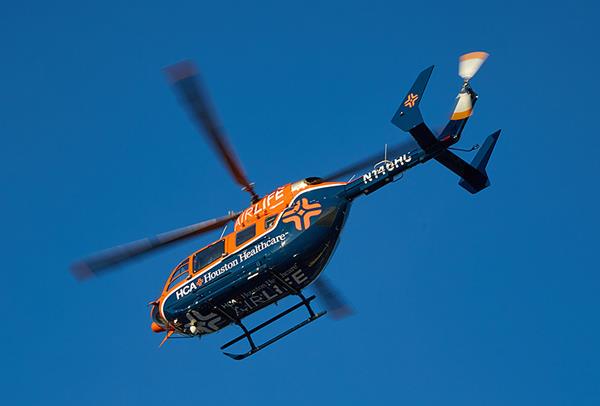Officials with HCA Houston Healthcare unveiled Houston’s newest air ambulance service and the city’s first advanced mobile training ambulance and patient simulator, two new programs designed to enhance high-level adult and pediatric trauma care.

HCA Houston Healthcare’s new AIRLife helicopters will operate 24/7, staffed with highly trained flight nurses, paramedics and skilled pilots. The first AIRLife helicopter will be based at The Woman’s Hospital of Texas. A second helicopter will be based at HCA Houston Healthcare Conroe. Both will have a range of approximately 120 miles and will respond to assist at 911 calls as well as transfer adult and pediatric patients from other hospitals in need of a higher level of care.
The new helicopters feature expanded cabin space and an increased maximum takeoff weight, according to Allen Sims, EMS executive at HCA Houston Healthcare.
Marty Delaney, HCA Houston Healthcare’s vice president of medical transport, will manage the AIRLife helicopters and ground ambulances.
The second EMS program, HCA Houston Healthcare’s mobile simulation ambulance, is a dynamic, next-generation EMS training center and portable classroom on wheels. The “simbulance” will be equipped with adult, child and infant mannequins capable of simulating a wide variety of trauma and medical emergencies, including airway blockages, pediatric seizures, newborn resuscitation, breech deliveries and other high-risk cases, particularly those rarely encountered in the field.
HCA Houston Healthcare’s mobile simulation ambulance houses three remote-controlled cameras, wireless microphones and a large flat-screen monitor for peer observation outside the ambulance. As a mobile training center, it can be set up at any Houston-area EMS facility, unlike current simulation ambulances located in fixed locations.
“With this unit, paramedics can train on cases they don’t see everyday without leaving their station,” Sims adds. “That’s a huge plus, particularly for smaller departments in outlying areas.”
While a handful of EMS departments may have a single adult or pediatric mannequin, he says they lack a “family” of programmed mannequins representing every age range. Sims says several departments have already booked the simulation ambulance for their paramedics.
